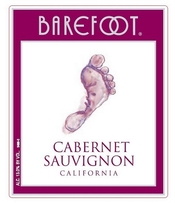Creators Syndicate
The wine blogosphere was all atwitter last week over a published report revealing three large wine companies — E&J Gallo, Constellation and The Wine Group — produce more than half of all the wine consumed in the United States.
Considering America drinks more wine — by volume and by value — than any other nation in the world, the big three couldn’t possibly quench the national thirst with nifty handcrafted wines made in an idyllic small vineyard in the heart of wine country.
 A whole bunch of it comes from vast vineyards that are farmed for volume, news that’s not really news but rather a fact of life that is rarely discussed by those who worship at the altar of new French oak barrels and trendy cult cabernets.
A whole bunch of it comes from vast vineyards that are farmed for volume, news that’s not really news but rather a fact of life that is rarely discussed by those who worship at the altar of new French oak barrels and trendy cult cabernets.
Hello, most of America — indeed, most of the world — drinks inexpensive wine produced in industrial facilities bulging with enormous stainless steel tanks and all of the tricks of modern winemaking, so your wine will taste somewhat like the more expensive juice when it’s really not.
This is a problem? I think not. Don’t get me wrong, I enjoy those special bottles with their unique personalities and interesting narratives as much as the next wine geek. But sometimes a wine is just an adult beverage (meaning merely that it contains alcohol) that you would prefer over beer or a distilled spirit. It usually doesn’t have to be any more than that, though more discerning consumers might like it to have a pleasant taste.
Consider the typical family that might enjoy a bottle of wine on the table with dinner each night. If the average price of wine they drank was $30, their annual budget for wine would come to $10,950, a number that would be difficult for many families to swallow. So make that average cost $20 per bottle, but the $7,300 tab would still be difficult to swallow for many.
That’s why the majority of wine consumed in the U.S. costs $10 or less. That’s what the average person is willing to pay, or what he or she can afford on a daily basis.
 So are we a nation of rubes, drinking cheap swill because we don’t know any better, unwilling to pay the price for a decent bottle of wine? No, we aren’t. We are no different than the inhabitants of such wine-savvy nations as France, Italy and Spain.
So are we a nation of rubes, drinking cheap swill because we don’t know any better, unwilling to pay the price for a decent bottle of wine? No, we aren’t. We are no different than the inhabitants of such wine-savvy nations as France, Italy and Spain.
Should you happen to vacation in Paris at some point, you will notice that it’s almost impossible to find a classified-growth Bordeaux or a Burgundy cru in most bistros and brasseries. What you will find are the much less expensive wines of the Loire Valley, the Rhone Valley and the Languedoc. Out in the countryside, it’s even more difficult to find top-notch Bordeaux and Burgundy.
Travel to Italy, and you will meet people in small villages who still take jugs to the back door of their favorite local wineries, filling them with inexpensive wine that failed to make the cut so it was never bottled.
Spaniards are notorious for their fondness for Rioja "crianza," which is the cheapest Rioja you can buy; and also inexpensive wines from La Mancha, Jumilla and Navarra.
It is hardly a crime against the culture to find beauty in a wine made for the masses, and with that in mind I give you a winning wine from the recent Winemaker Challenge in San Diego. A panel of three winemakers evaluated cabernet sauvignons priced at $10 or less and awarded a Platinum medal to the non-vintage Barefoot Cellars Cabernet Sauvignon, California ($6.99).
They all agreed, it didn’t stand a chance in the championships against the 2009 Cakebread Cellars Dancing Bear Ranch Cabernet Sauvignon, Howell Mountain ($110), which was voted Best of Class Cabernet Sauvignon, but they all found it to be delicious and a winemaking achievement within its price class. I imagine it was produced in enormous volume; perhaps millions of cases.
But if you can buy cheap and good, that seems to me a winning combination, no matter what the cognoscenti think.
Email comments to [email protected] and follow Robert on Twitter @wineguru.
8
